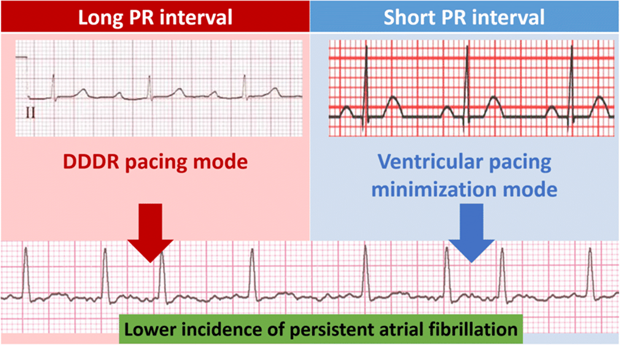A nurse in an emergency department is reviewing a client's ECG reading.
Which of the following findings should the nurse identify as an indication that the client has first-degree heart block?
Prolonged PR intervals.
Nondiscernible P waves.
More P waves than QRS complexes.
No correlation between P and QRS waves.
The Correct Answer is A

First-degree heart block is a type of atrioventricular (AV) block that involves the consistent prolongation of the PR interval (defined as >0.20 seconds) due to delayed conduction via the atrioventricular node.
This is seen on an ECG as a PR interval greater than 200 ms in length.
Choice B: Nondiscernible P waves are not an answer because it is not mentioned as a characteristic of first-degree heart block in my sources.
Choice C: More P waves than QRS complexes is not an answer because it is not mentioned as a characteristic of first-degree heart block in my sources.
Choice D: No correlation between P and QRS waves is not an answer because it is not mentioned as a characteristic of first-degree heart block in my sources.
Nursing Test Bank
Naxlex Comprehensive Predictor Exams
Related Questions
Correct Answer is D
Explanation
The nurse should ask the client to empty his bladder prior to the procedure.
This is important because a full bladder can obstruct the area where the needle will be inserted and increase the risk of bladder injury during the procedure.
Choice A is incorrect because the client should be positioned sitting upright or lying in bed with the head of the bed elevated during the procedure.
Choice B is incorrect because administering a stool softener is not necessary following an abdominal paracentesis.
Choice C is incorrect because the client should be instructed to exhale and hold their breath during needle insertion to help move the diaphragm upward and away from the area where the needle will be inserted.
Correct Answer is C
Explanation
“You should expect a warm sensation after the injection of the contrast dye during the procedure.” During cardiac catheterization, a contrast dye is injected into the body to highlight blood flow through the arteries and show blockages in the blood vessels that lead to the heart.
This can cause a warm sensation.
Choice A is incorrect because usually, patients are awake during cardiac catheterization but are given medications to help them relax.
Choice B is incorrect because recovery time for a cardiac catheterization is quick.
Choice D is incorrect because there is no information found to support this statement.
Whether you are a student looking to ace your exams or a practicing nurse seeking to enhance your expertise , our nursing education contents will empower you with the confidence and competence to make a difference in the lives of patients and become a respected leader in the healthcare field.
Visit Naxlex, invest in your future and unlock endless possibilities with our unparalleled nursing education contents today
Report Wrong Answer on the Current Question
Do you disagree with the answer? If yes, what is your expected answer? Explain.
Kindly be descriptive with the issue you are facing.
